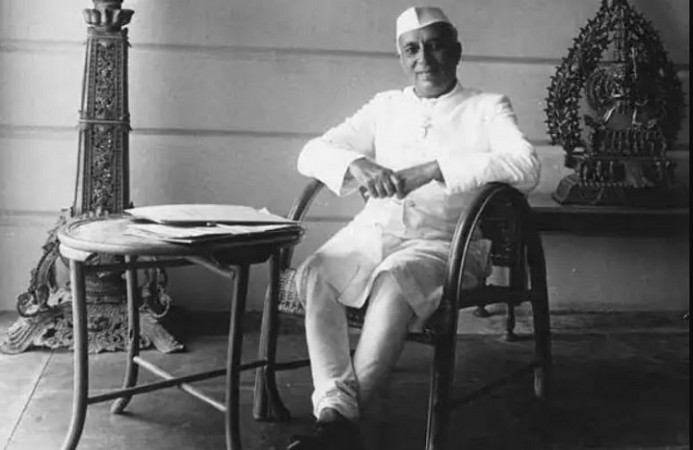
This Day in History, July 8, 1954: Jawaharlal Nehru Inaugurates the World's Longest Dam, Bhakra-Nangal, in Punjab
On July 8, 1954, a momentous event took place in the Indian state of Punjab as Jawaharlal Nehru, the first Prime Minister of India, inaugurated the Bhakra-Nangal Dam. This historic engineering marvel, often referred to as the "Temple of Resurgent India," stands as a testament to the country's commitment to progress and development.
The Bhakra-Nangal Dam, situated on the Sutlej River in the foothills of the Himalayas, was a monumental undertaking that aimed to harness the power of the river for irrigation, hydroelectric power generation, and flood control. The project, conceived in the early 1940s, sought to transform the arid landscape of northern India into a fertile and prosperous region.
Construction of the dam began in 1948, shortly after India gained independence from British rule. The visionary leadership of Prime Minister Nehru, who was a staunch advocate of large-scale infrastructure projects, played a pivotal role in the realization of this ambitious endeavor. The project was undertaken by the Bhakra Beas Management Board (BBMB), a joint venture between the states of Punjab, Haryana, Rajasthan, Himachal Pradesh, and the Indian government.
The Bhakra-Nangal Dam, at the time of its completion, was hailed as the tallest dam in the world, standing at a staggering height of 225 meters (738 feet). The dam stretched across the Sutlej River, forming a reservoir that extended for 168 kilometers (104 miles). The reservoir, known as the Gobind Sagar Lake, submerged vast stretches of land but provided immense benefits to the region.
One of the primary objectives of the Bhakra-Nangal Dam was to provide irrigation water to the neighboring states, which were primarily dependent on rain-fed agriculture. The dam's construction enabled the irrigation of millions of acres of farmland, thereby transforming the region into a prosperous agricultural hub. The availability of reliable water supply significantly increased crop yields and brought economic prosperity to the local farming communities.
Another crucial aspect of the dam was its hydroelectric power generation capacity. The Bhakra-Nangal Dam housed several powerhouses, equipped with turbines that converted the force of the flowing water into electricity. The initial power generation capacity was 1,200 megawatts, making it one of the largest hydroelectric power projects in the world at the time. Over the years, the capacity has been expanded, and today it stands at an impressive 1,325 megawatts.
The Bhakra-Nangal Dam also played a pivotal role in flood control. The Sutlej River, prone to seasonal flooding, posed a significant threat to the surrounding areas. By regulating the flow of the river, the dam mitigated the risk of floods and protected the downstream regions from their devastating impact. The dam's reservoir acts as a buffer, absorbing excessive water during the monsoon season and releasing it in a controlled manner.
The inauguration of the Bhakra-Nangal Dam by Prime Minister Nehru on July 8, 1954, was a moment of great pride and celebration for India. Nehru's speech on the occasion emphasized the dam's significance in ushering in an era of progress and prosperity. The project represented India's determination to overcome challenges and achieve self-sufficiency in various sectors.
The Bhakra-Nangal Dam stands as an enduring symbol of India's engineering prowess and technological advancements. It has not only facilitated the growth of agriculture and industry in the region but also provided a lifeline to millions of people through its power generation capabilities. The dam continues to be a source of pride for the nation and a testament to the vision and determination of its leaders.
Today, the Bhakra-Nangal Dam remains an integral part of India's water management infrastructure. Its impact on the lives of millions of people and its contribution to the nation's development are undeniable. The legacy of this iconic engineering marvel serves as a reminder of what can be achieved through determination, innovation, and the pursuit of a better future.